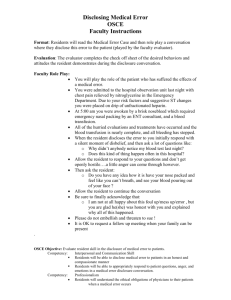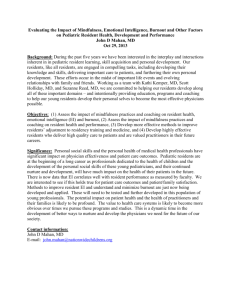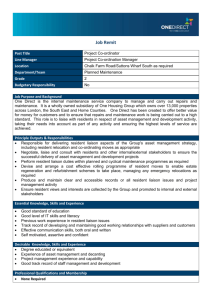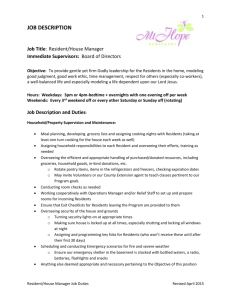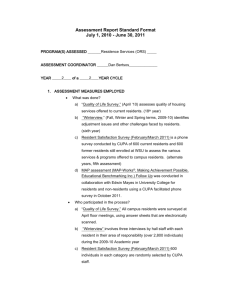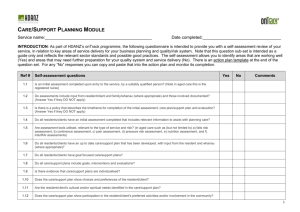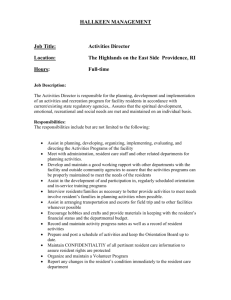North West Model Facilitator Guide
advertisement
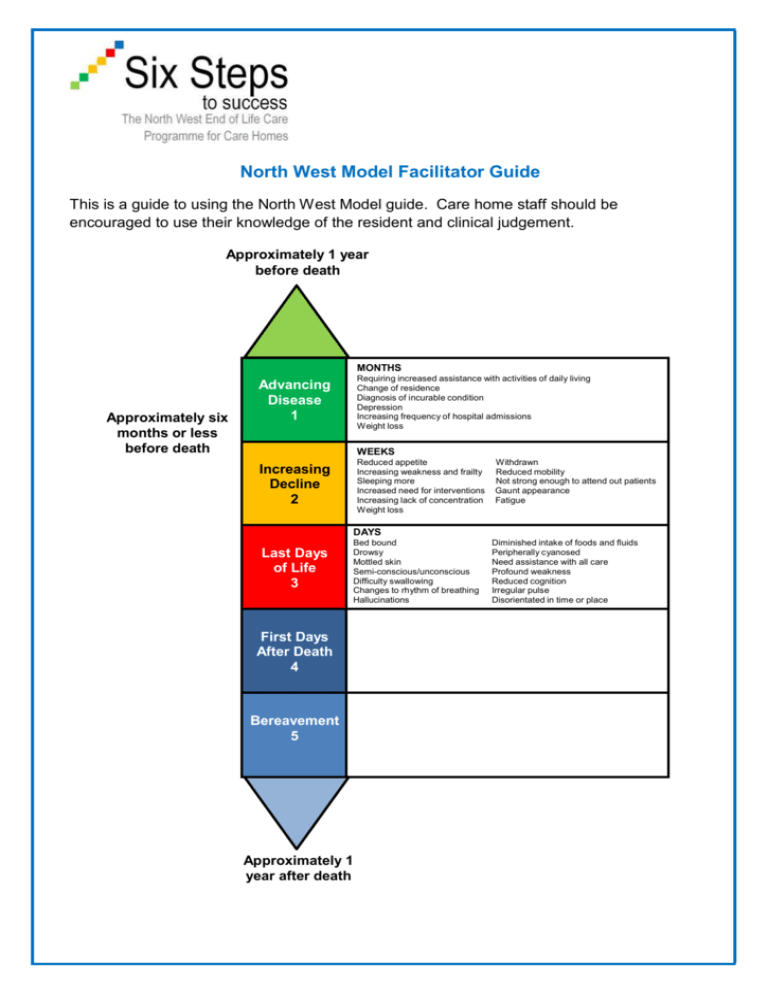
North West Model Facilitator Guide This is a guide to using the North West Model guide. Care home staff should be encouraged to use their knowledge of the resident and clinical judgement. Approximately 1 year before death MONTHS Approximately six months or less before death Requiring increased assistance with activities of daily living Change of residence Diagnosis of incurable condition Depression Increasing frequency of hospital admissions Weight loss Advancing Disease 1 WEEKS Reduced appetite Increasing weakness and frailty Sleeping more Increased need for interventions Increasing lack of concentration Weight loss Increasing Decline 2 Withdrawn Reduced mobility Not strong enough to attend out patients Gaunt appearance Fatigue DAYS Last Days of Life 3 Bed bound Drowsy Mottled skin Semi-conscious/unconscious Difficulty swallowing Changes to rhythm of breathing Hallucinations First Days After Death 4 Bereavement 5 Approximately 1 year after death Diminished intake of foods and fluids Peripherally cyanosed Need assistance with all care Profound weakness Reduced cognition Irregular pulse Disorientated in time or place Identifying Patients who require end of life care The need to identify residents in the last years of life specifically aims to focus the care giver on the resident’s needs; addressing the resident’s journey to date. It is easy to focus on the resident’s current needs and deliver care on a day to day basis but identifying residents in the last year of life will assist the care giver to begin and plan care for the resident’s anticipated end of life care needs. The North West end of life care model can be used as a guide to aid the process of identifying residents in the last years of life but it is important to remember this is a guide and the exercise is to promote discussion and planning rather than accuracy in predictions. There is no scientific methodology to identify residents in the last years of life and what may begin as educated guess work may actually develop into resident’s needs being addressed, planned for and met using a multi- disciplinary approach. Residents can move up and down the model, even skipping stages which may be more likely following significant events. Care home staff should not be afraid to move residents between stages; it will ensure the resident’s and family’s needs are addressed at the appropriate time. Address significant events when you are identifying residents in the last years of life. Things that may indicate a change could be: Reduced mobility Re-current falls More frequent hospital admissions Re-current infections Deterioration in swallowing General loss of interest from patient Loss of appetite This list is not exhaustive. These factors are considerations although it must be encouraged that all areas of fundamental nursing care are addressed to rule out acute reasons for symptoms that may be reversible rather than the general deterioration of the resident. It is the responsibility of the team/key worker to have a meaningful discussion with the resident and/or relatives based on the assessments and team discussions. The information given to residents and families should be factual and an emphasis needs to be on how information is communicated with residents/relatives at an appropriate time. NW Model Guidance V2 2014




